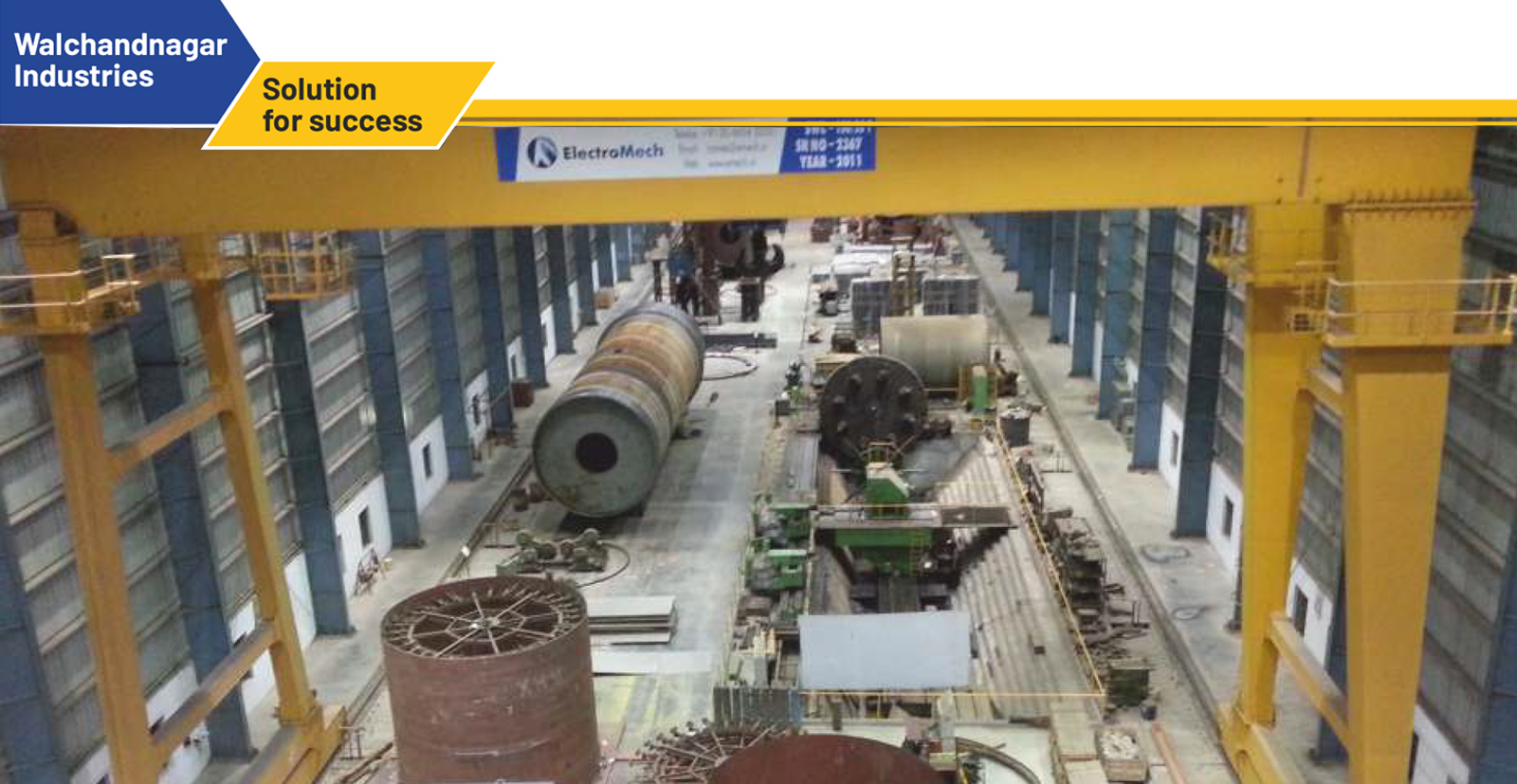Gantry cranes streamlining the production industry
WE ARE YOUR SOLUTION
When the factory shed structure is not strong
enough to bear the load of heavy duty cranes,
ElectroMech shows a smart way out.


About Walchandnagar Industries
Walchandnagar Industries Ltd. (WIL) is an Indian company with a legacy of over 100 years and strong global presence. WIL is a reputed name in the manufacture of critical equipment for a wide spectrum of industries/applications such as aerospace, cement, power, nuclear, defence, missiles, foundries, automotive, sugar and process equipment.
Use of three, heavy-duty gantry cranes helps in streamlining production, allows optimal use of floor space and ensures safe, jerk-free handling. All these benefits, plus the added advantage of substantial savings in the project cost.
The handling challenges at Walchandnagar
For their Missile Division, WIL required 150t cranes and approached ElectroMech to design a suitable solution for this critical material handling requirement. Safety and precision in handling were of utmost importance for this requirement. After analysing various aspects of the requirement, it was revealed that the factory structure was not strong enough to bear the load of 100t plus capacity cranes. Strengthening the existing structure to bear such loads was a very costly proposition and would have escalated the project budget considerably. Obviously then, the recommendation of conventional, double girder EOT cranes using truss supports was ruled out and essentially an alternate handling system was to be designed. While designing a new system, the tight space constraints were also to be taken into consideration.
Solutions from ElectroMech
ElectroMech’s design team analysed the situation and suggested use of completely customised gantry cranes of different capacities with sleek side supports moving on welldesigned, floor-mounted rails to ensure jerk-free movement. These rails are mounted on raised platforms which are precisely levelled. Since these cranes were to be used for manufacturing highly critical defence equipment, it was necessary for the crane operations to be jerk-free, fail-safe and precise. This is a unique case where specially designed gantry cranes are being installed for an indoor application. Critical care was taken while designing the support structure of the cranes as they are expected to safely handle a load of up to 150t and at the same time remain sleek and light. The cranes are now being used regularly during the manufacturing of several important defence and aerospace related equipment.
How Walchandnagar Industries benefited from ElectroMech solutions
- Substantial savings in the project cost due to use of sleek gantry cranes
- Compact design of cranes ensures optimum floor space utilisation
- Faster project execution and minimum work hold-up since the cranes, supports, rails, etc. were manufactured in ElectroMech factory and installed at site
- Precisely levelled guide rails and specially designed rail movement ensures safe, jerk-free handling of loads even up to 150t
Challenges
- Inadequacy of load bearing capacity of existing factory structure
- Entire project was to be accomodated in an allocated budget
- Defence related application required safe and precise handling of equipment
- Ensure maximum shop-floor space utilisation
Solution
- Floor-mounted guide rails and use of gantry cranes instead of investing in strengthening the factory structure to achieve substantial savings in project costs
- A raised platform and girder placed on the ground to provide adequate support for high capacity cranes
- Sleekly designed, customised gantry cranes of 150t capacity were recommended to ensure trouble-free operation and utilise maximum floor space
